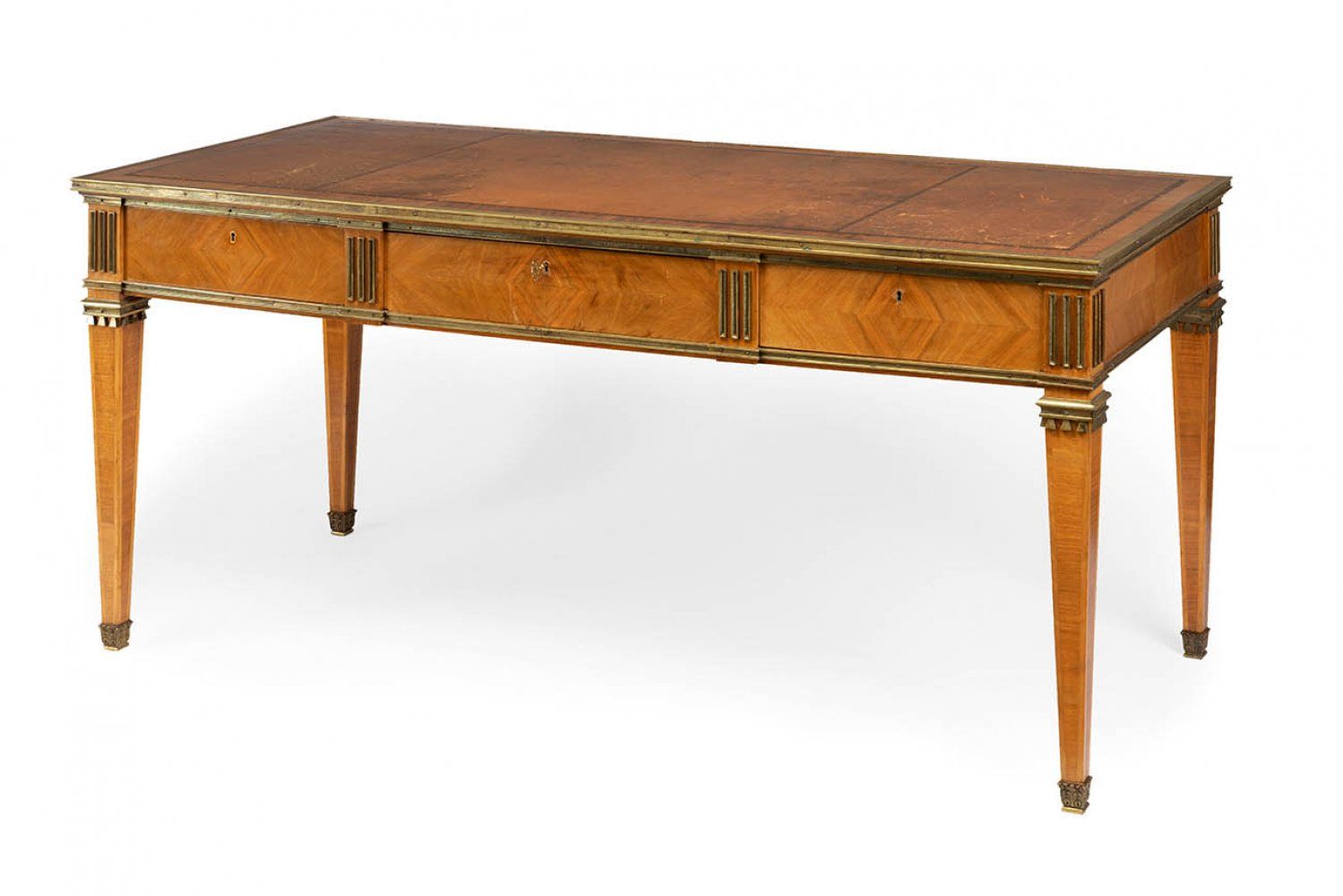Description
MARC DU PLANTIER (Madagascar, 1901-France, 1975).
MARC DU PLANTIER (Madagascar, 1901-France, 1975). Louis XVI style writing desk. Walnut wood and bois de violette, bronze fittings, embossed leather top. Provenance: Marquisate of Salobral. Measurements: 79 x 171 x 76 cm. In this writing-table we can appreciate the purification of style that Marc Du Plantier reached in his mature stage, a formal purism that goes through a process of abstraction of the Louis XVI style. This can be seen in the stilted legs set in bronze casings, the waist adorned with architecturally inspired triglyphs and the jagged ornamentation of the abacuses. Considered in his lifetime as one of the most gifted and brilliant decorators of his time, an emblematic figure of the furniture of the 1940s, Marc du Plantier was born in Madagascar in 1901. He decided to specialise initially in mathematics in order to enter the Ecole Polytechnique, but he turned towards architecture and entered the Ecole des Beaux-Arts in Paris in 1922, following the teaching of Gabriel Héraud and, at the same time, the lessons of the painter Paul Albert Laurens at the Académie Julian. Marc du Plantier began his professional career in the fashion industry, delivering models for Jeny and Doucet; in 1929 he decided to become an interior designer. From this date on, Du Plantier was soon entrusted with the design of complete interiors in which he worked with architecture and skilful lighting. The first pieces reveal his taste for the elegant and refined combination of various materials, as well as his predilection for the use of gilded bronzes that appeal to the French furniture tradition and an idealised antiquity. The inauguration of his personal flat, entirely designed by him in 1932 is proof of the dazzling success of his creations; he was soon followed by several commissions from the Rothschild family. Marc du Plantier was commissioned to decorate the residence of the Counts of Elda in Madrid in 1939. In the end, he remained there for more than nine years due to the success of his neoclassical pieces on the peninsula, a period known as the "Spanish" period. On his return to France in 1949, he moved towards a much more modern approach, erasing from his work any reminiscence of past styles, favouring a mixture of wrought iron, glass and stone elements. Du Plantier's work, which became increasingly refined and modernist, continued to please and earned him numerous official commissions and exhibitions in France, but also in the United States and Mexico.
7
MARC DU PLANTIER (Madagascar, 1901-France, 1975).
